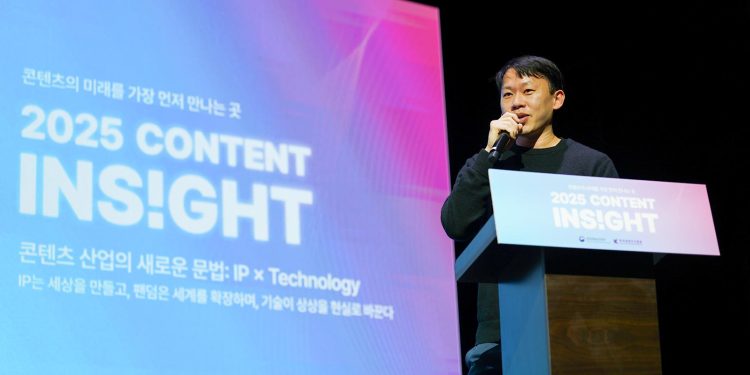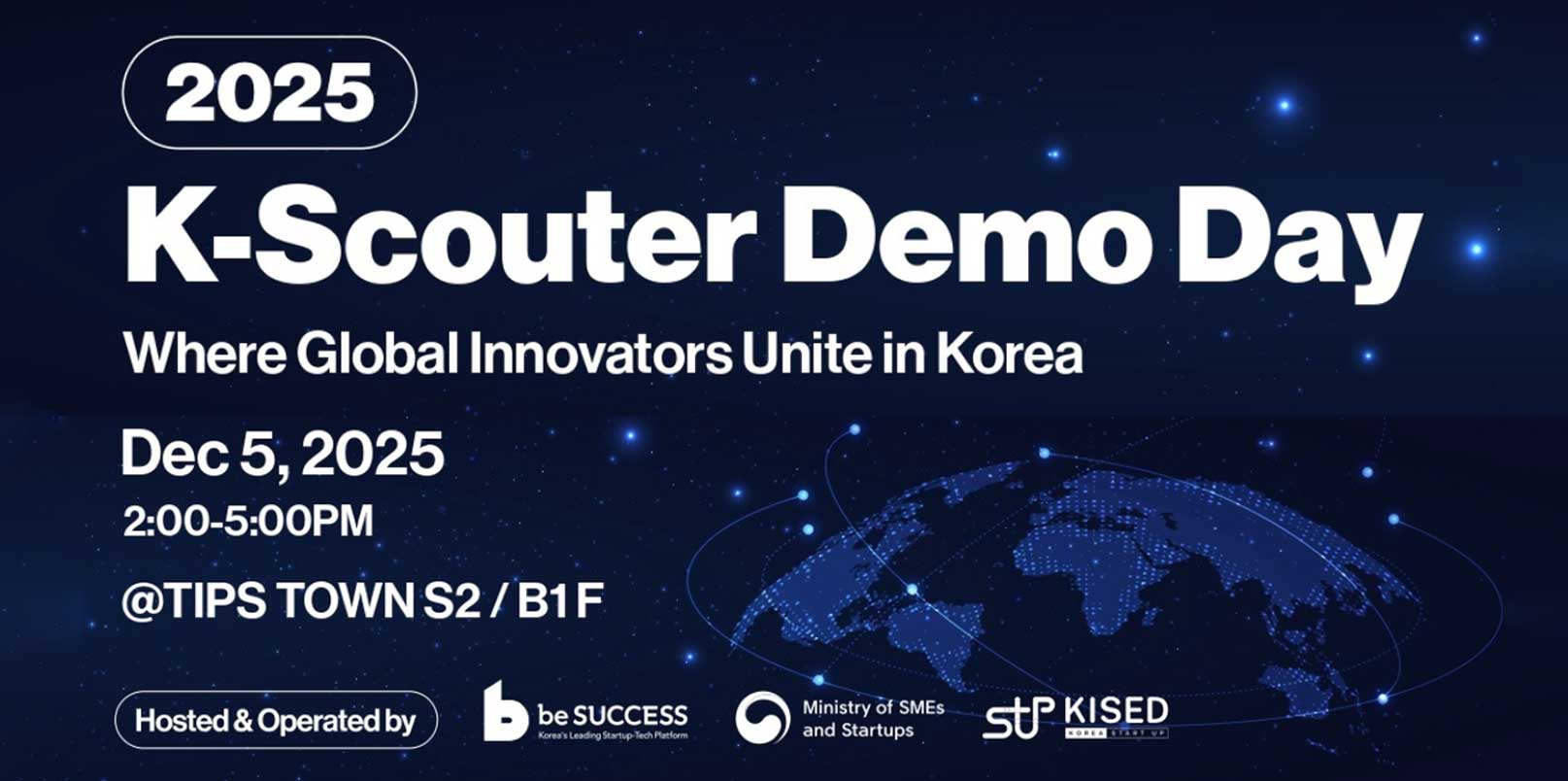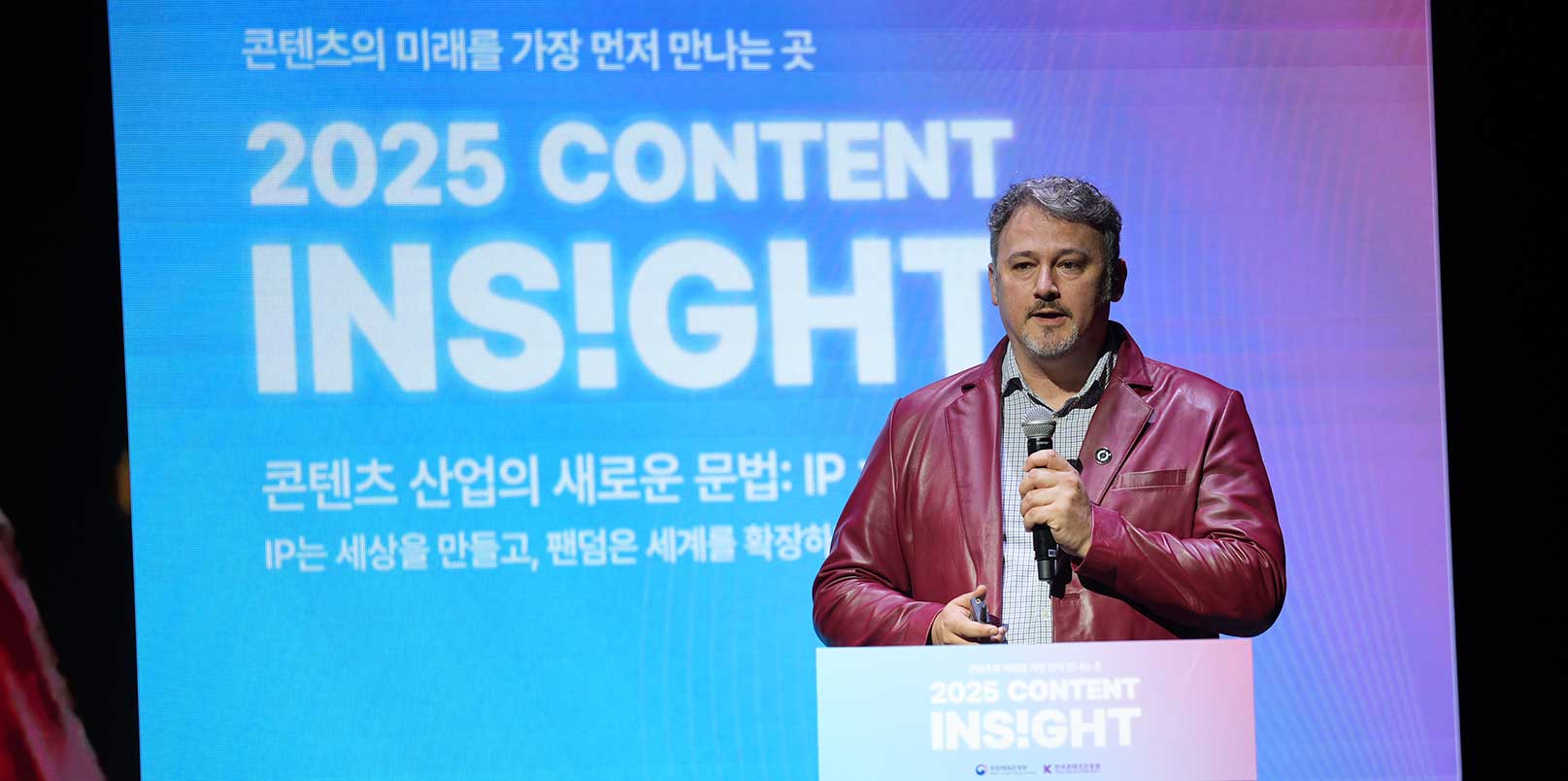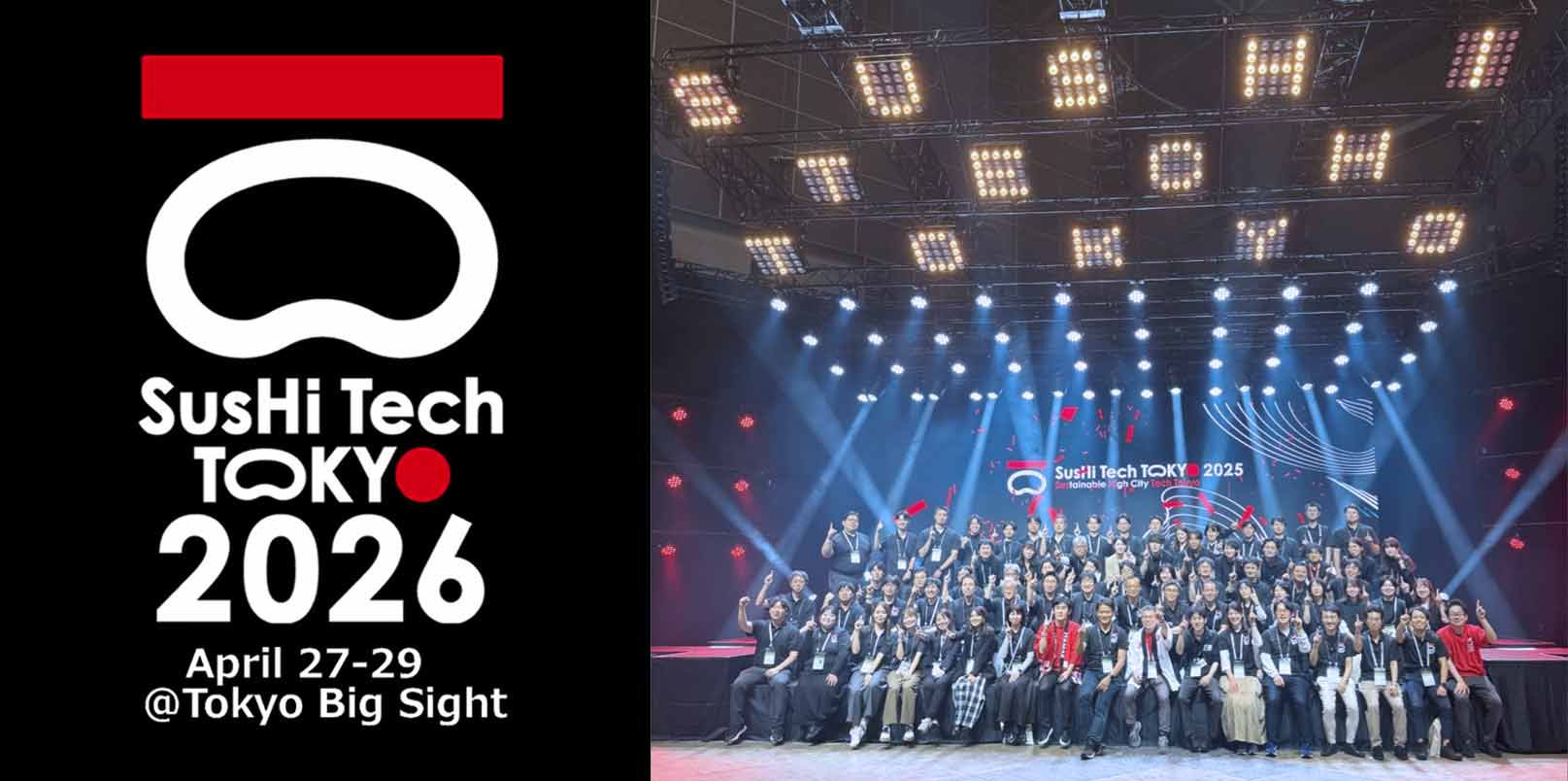As artificial intelligence reshapes creative industries worldwide, Korea is emerging as a testing ground for how technology and storytelling can converge. At KOCCA Content Insight 2025, Leonardo AI’s Timothy Hsu offered a rare, forward-looking perspective on what happens when human imagination meets AI machine capability — and why mastering the balance may define the next wave of global creative economies.
Timothy Hsu on The Future of AI-Driven Storytelling at KOCCA Content Insight 2025
The 2025 edition of Content Insight (Content INS!GHT) forum by the Korea Creative Content Agency (KOCCA) and the Ministry of Culture, Sports and Tourism (MCST), was held on November 6–7 at the Hongneung Content Culture Plaza in Seoul under the theme “The New Grammar of the Content Industry: IP × Technology.”
During the second day of this event, Timothy Hsu, Head of Business Development at Leonardo AI, offered a rare window into how artificial intelligence is rewriting the language of creativity itself. Hsu’s keynote followed Orbital Studios founder A.J. Wedding’s session on virtual production, extending the conversation from real-time filmmaking to AI-driven storytelling.
Speaking to prominent industry leaders, policymakers, and creators, Hsu’s presentation, “Beyond Prompts: The Art and Industry of AI Storytelling,” examined how AI’s role in creative industries has evolved from mechanical generation into a partner that extends human imagination.
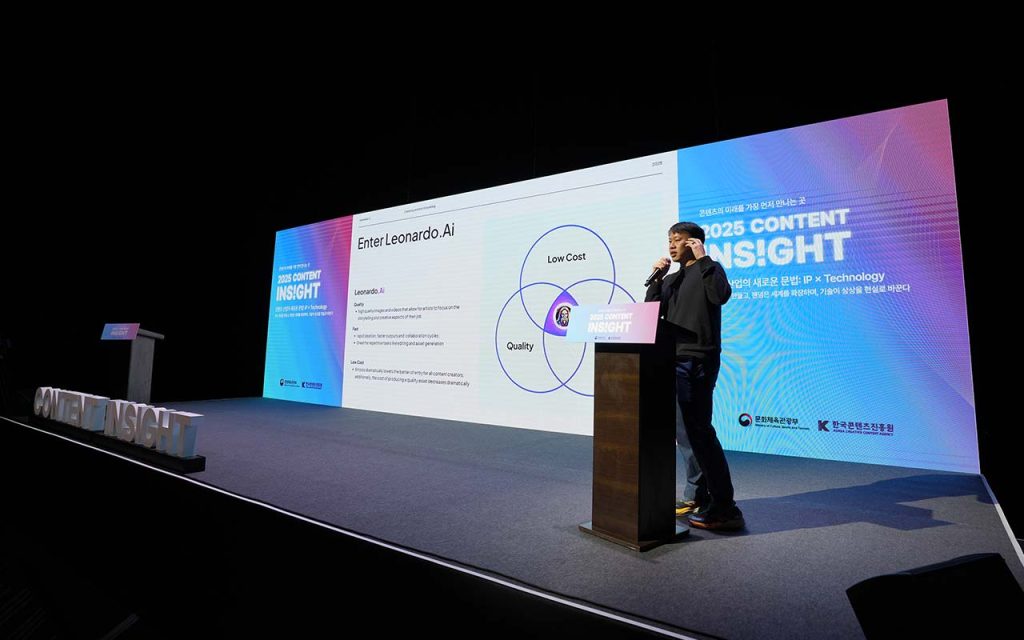
Timothy Hsu, whose career spans Epic Games, MasterCard, and now Leonardo AI (acquired by Canva in 2024), positioned AI as a creative multiplier rather than a replacement.
Also known as Tim Hsu, the Leonardo AI executive delivered a simple yet profound argument at KOCCA Content Insight 2025: that technology will certainly accelerate production, but it is still the human mind that gives meaning, emotion, and coherence to what AI creates.
Timothy Hsu: AI as the Bridge Between Cost, Speed, and Quality
Traditionally, content production required a trade-off among three constraints — cost, quality, and speed. Based on his experience, Tim Hsu stated at KOCCA Content Insight 2025 that achieving all three was nearly impossible.
And so, he believed that AI had broken the barrier.
Through tools like Leonardo AI’s generative visual suite, small teams and independent creators can now produce high-quality outputs with minimal time and cost.
He demonstrated how creators can test storyboards, character concepts, and design directions within seconds instead of weeks. This acceleration, he explained, represents a structural shift in how creative industries operate across advertising, gaming, fashion, and animation.

Yet he also acknowledged that creative control and artistic precision remain ongoing challenges. And these are areas where AI tools continue to evolve.
Beyond Prompts: AI as a Creative Partner
Hsu challenged the notion that creativity in AI begins and ends with text prompts. “You don’t need to be a prompt engineer to use AI well,” he said. “If you can draw, imagine, or describe — AI can help you bring it to life.”
He then demonstrated Leonardo’s Realtime Canvas and Flow State features, which allow creators to draw, ideate, and iterate visually — bridging the gap between concept and execution. These tools enable collaboration in real time, allowing creative directors to guide teams interactively rather than through delayed feedback loops.
The session also showcased Content and Style Reference functions that maintain artistic coherence across outputs and LORA training, a technique that allows users to train AI on faces, fashion lines, or visual worlds unique to their projects.
These innovations point to a future where creative direction becomes more intuitive, transparent, and dynamic — aligning closely with Korea’s national vision for accessible AI-driven content creation.
Korea’s Creative-Tech Ecosystem and the Democratization of AI
What Tim Hsu delivered at KOCCA Content Insight 2025 on how Leonardo AI’s success in enhancing creative production carried particular resonance within the Korean ecosystem.
Over the years, Korea’s Ministry of Culture, Sports and Tourism and KOCCA have been actively fostering AI and real-time production technologies under programs that support next-generation studios, metaverse storytelling, and sustainable content ecosystems.
His approach — lowering technical barriers and empowering non-experts — parallels Korea’s strategy to make creative tools available to a wider base of creators and startups.
It also echoes the broader government-backed movement to integrate AI across creative sectors within the nationwide AI Transformation strategy (AX), boosting vertical AI in sector-specific industries and ensuring that content innovation remains inclusive and globally competitive.
Expanding Imagination: The New Language of Storytelling
The latter half of Hsu’s talk explored AI’s potential to expand the boundaries of imagination itself.
Through live demonstrations, he showed how AI tools can merge characters, worlds, and moods — turning abstract ideas into vivid stories. His examples, from hybrid creatures to surreal transformations, underscored AI’s capacity to amplify creativity rather than constrain it.
He also argued that AI has already reached a stage where creators can produce visually cohesive narratives in seconds — something unimaginable just a year ago. However, once again during his session at KOCCA Content Insight 2025, Tim Hsu strongly cautioned that the essence of storytelling will still remain human:
“AI can help you generate scenes faster, but it’s the creator who gives meaning to what those images become.”
The Future of AI-Driven Creativity and Its Relevance with Korea’s Innovation
Tim Hsu’s presentation at KOCCA Content Insight 2025 was far beyond a mere demonstration of Leonardo AI’s capabilities. In fact, the session has resonated far beyond the creative community.
Through his story and demonstration, Tim Hsu’s has successfully shown how AI innovation intersects with cultural export and startup growth. The ability to lower creative barriers and scale content rapidly could potentially position Korea as a global leader in AI-driven storytelling — building on its strengths in K-content, gaming, digital art, and design software.
His perspective also offered practical insight for venture investors and startup accelerators tracking the rise of creative AI. By bridging art and technology, platforms like Leonardo AI represent a growing frontier where Korean companies can localize solutions and train models with domestic IP for successful global export of creative technology.
AI-Driven Storytelling Insight by Timothy Hsu: A Future Where Creativity Leads Technology
In closing, Hsu reminded the audience that AI’s promise lies not in automation, but in augmentation. While the tools can accelerate ideas, the spark that makes stories memorable — emotion, context, and cultural nuance — remains deeply human:
“AI allows us to scale faster, produce higher-quality assets, and expand our imagination — but it can never replace creativity or storytelling.
The next generation of storytellers will belong to those who know how to master their craft and use AI to tell their stories better.”
Finally, Tim Hsu’s session at KOCCA’s Content Insight 2025 offered a timely reminder that the future of content is never about machines replacing creators, but about humans using machines to amplify imagination and accelerate creation.
Because even with identical tools, each creator brings a different intent and perspective. That is why as long as imagination evolves, creativity will continue to lead technology.
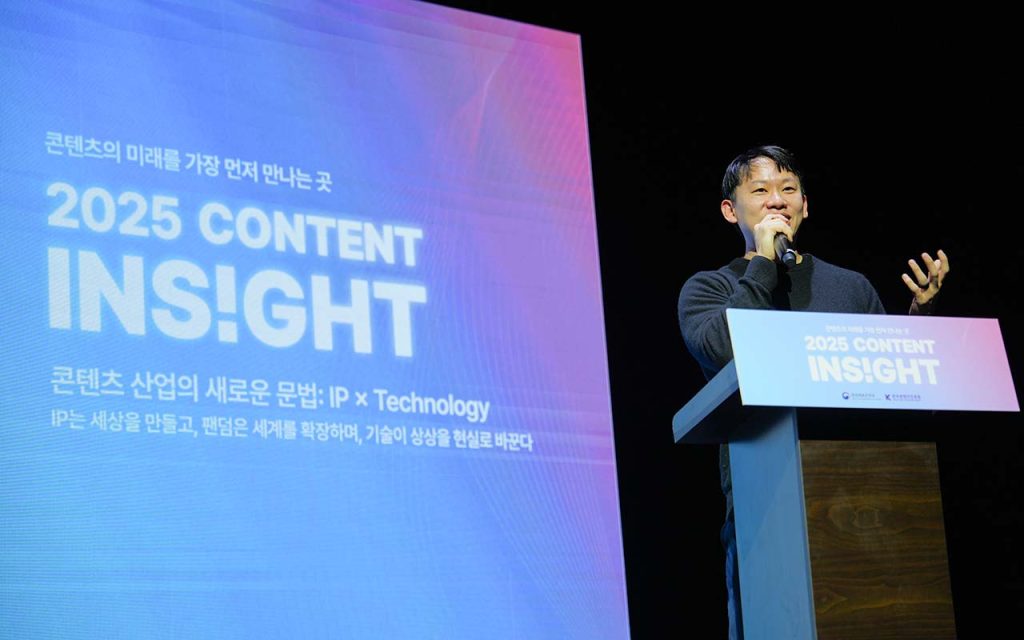
– Stay Ahead in Korea’s Startup Scene –
Get real-time insights, funding updates, and policy shifts shaping Korea’s innovation ecosystem.
➡️ Follow KoreaTechDesk on LinkedIn, X (Twitter), Threads, Bluesky, Telegram, Facebook, and WhatsApp Channel.


